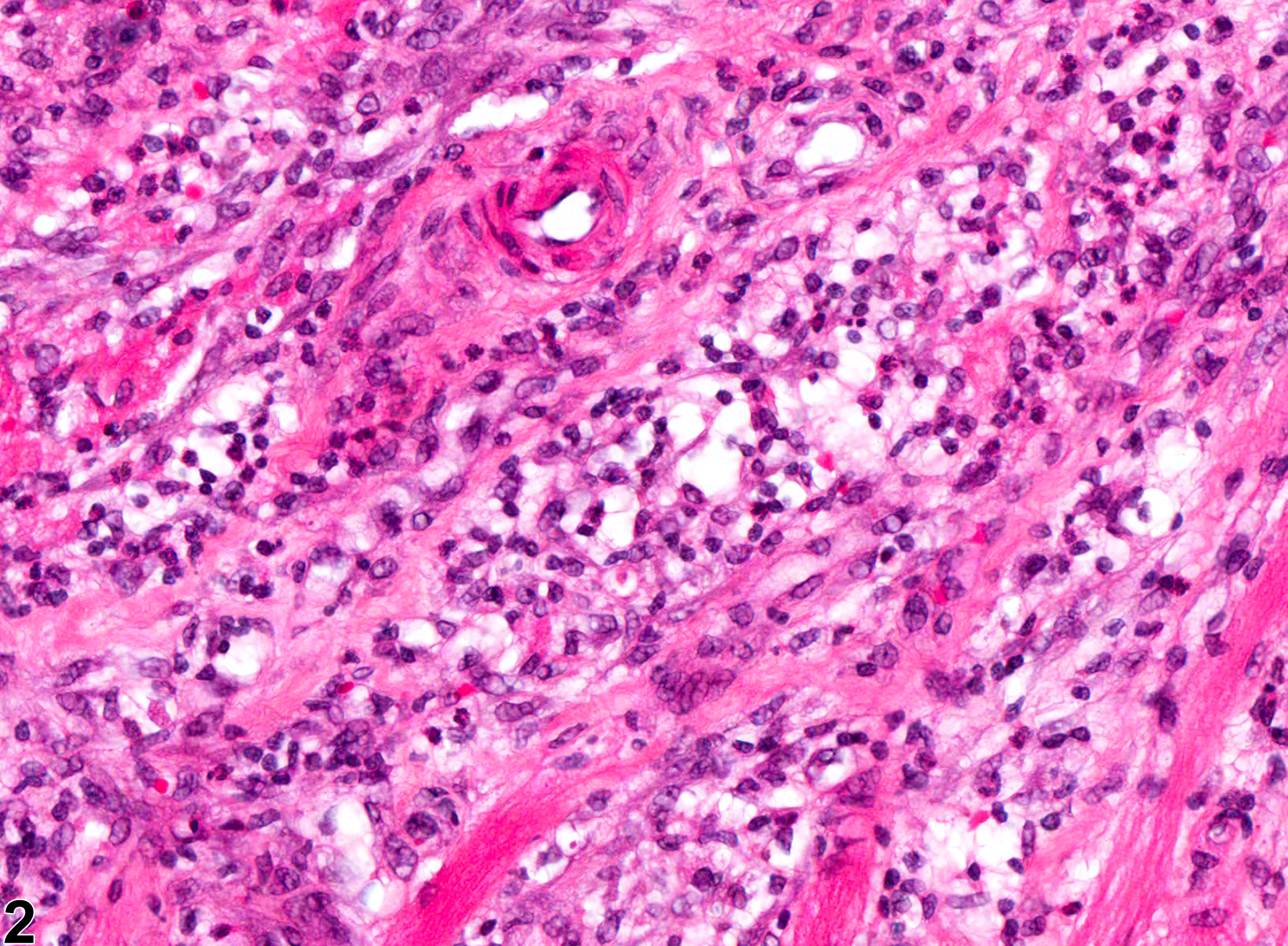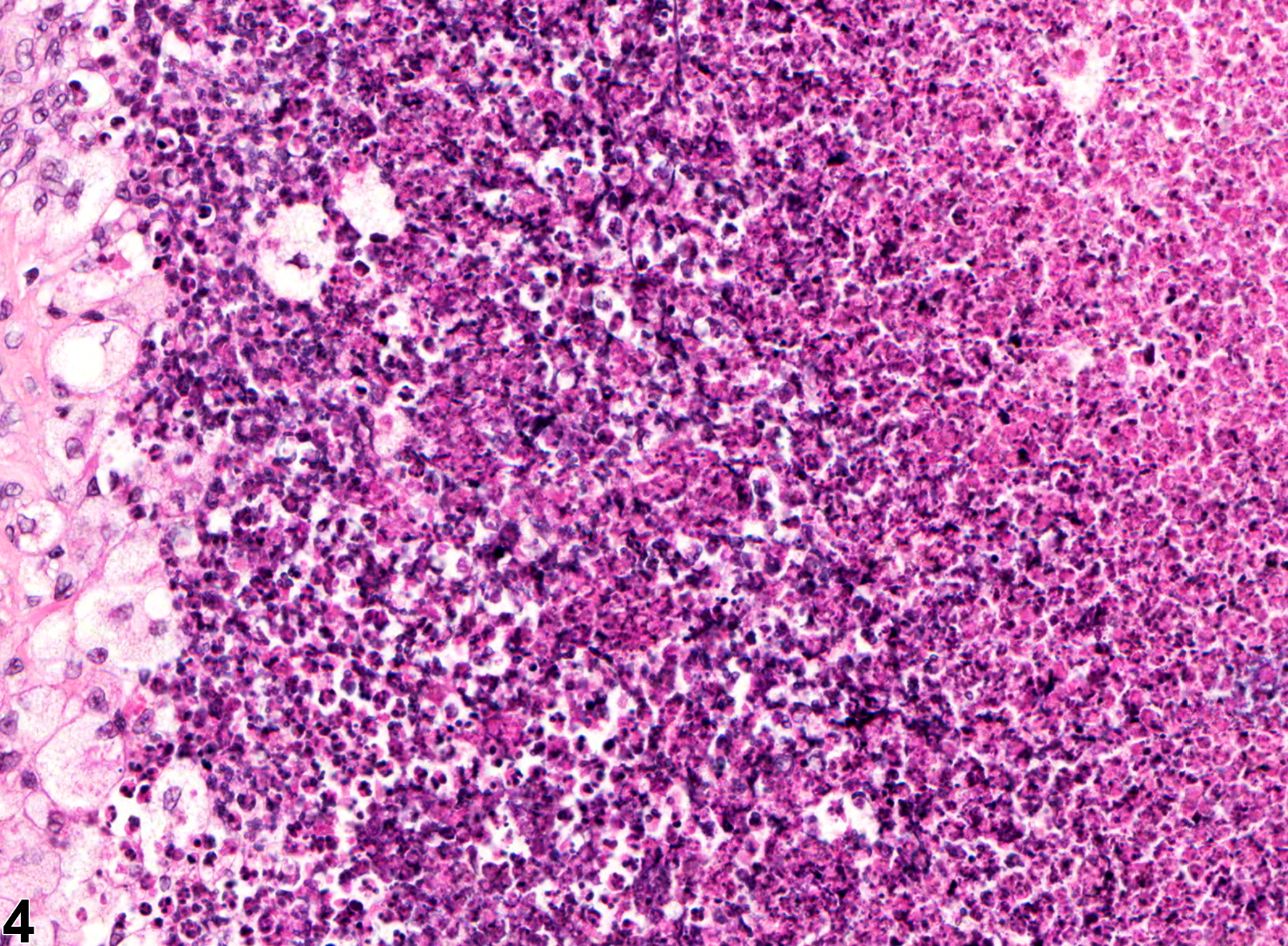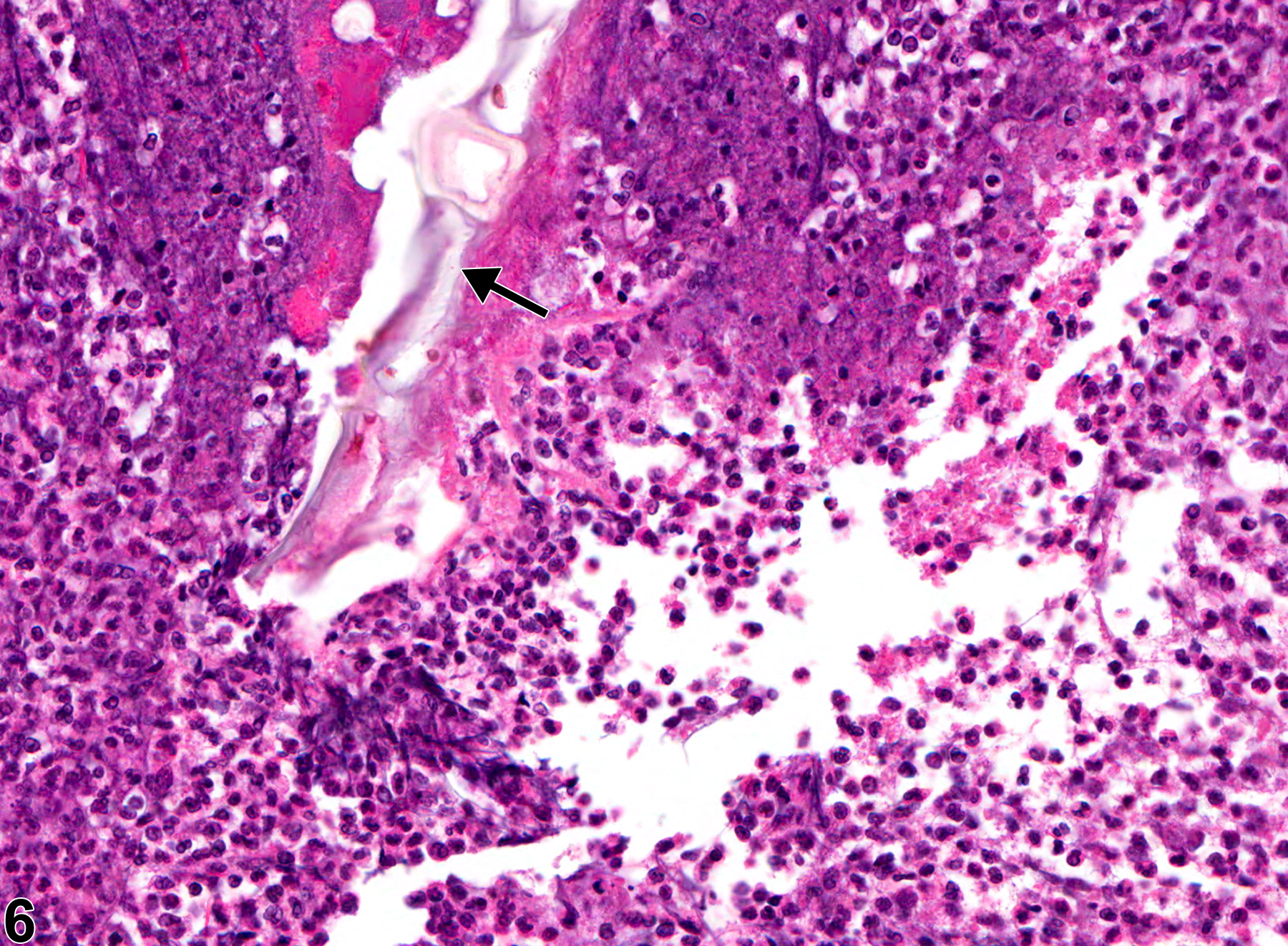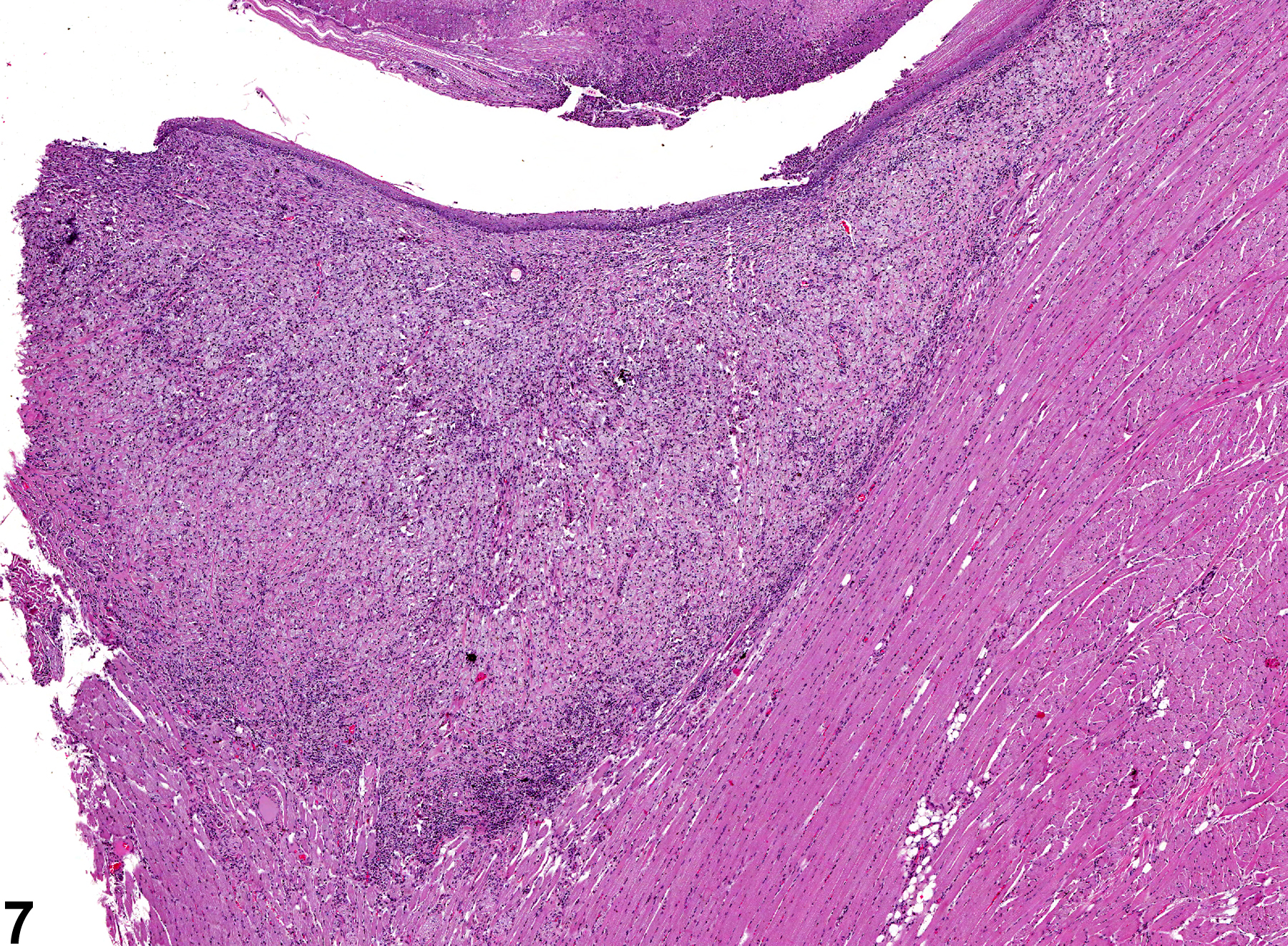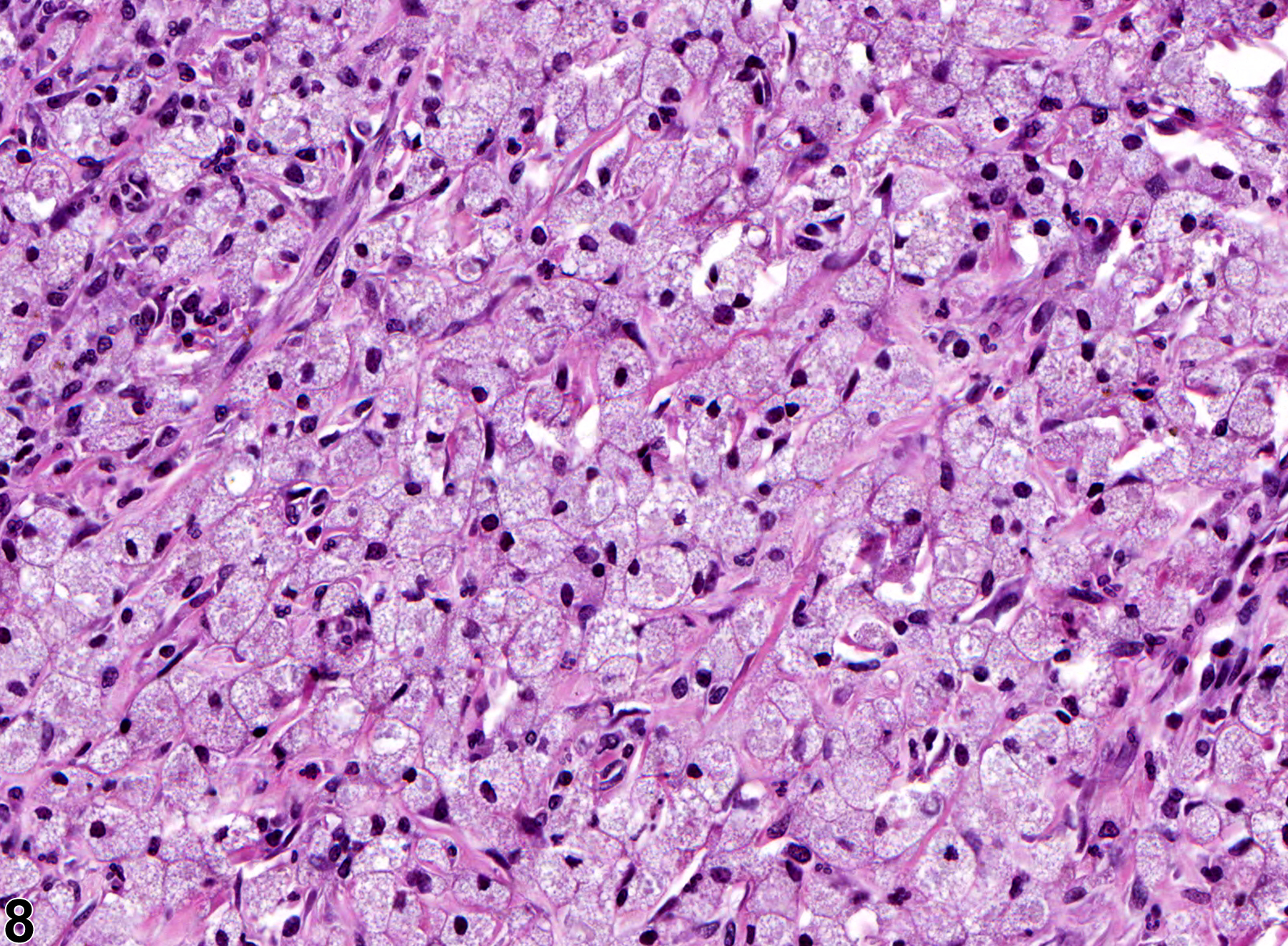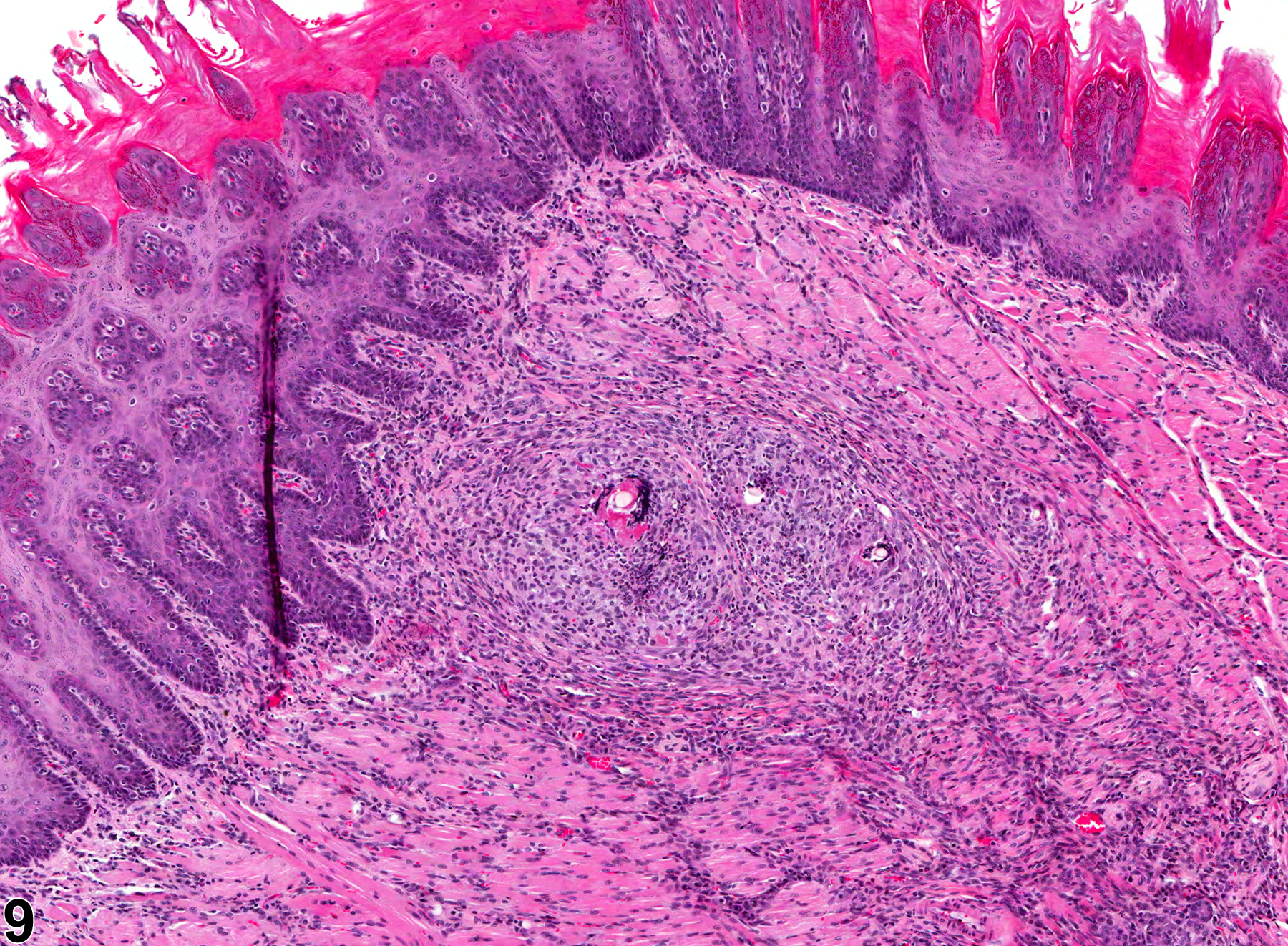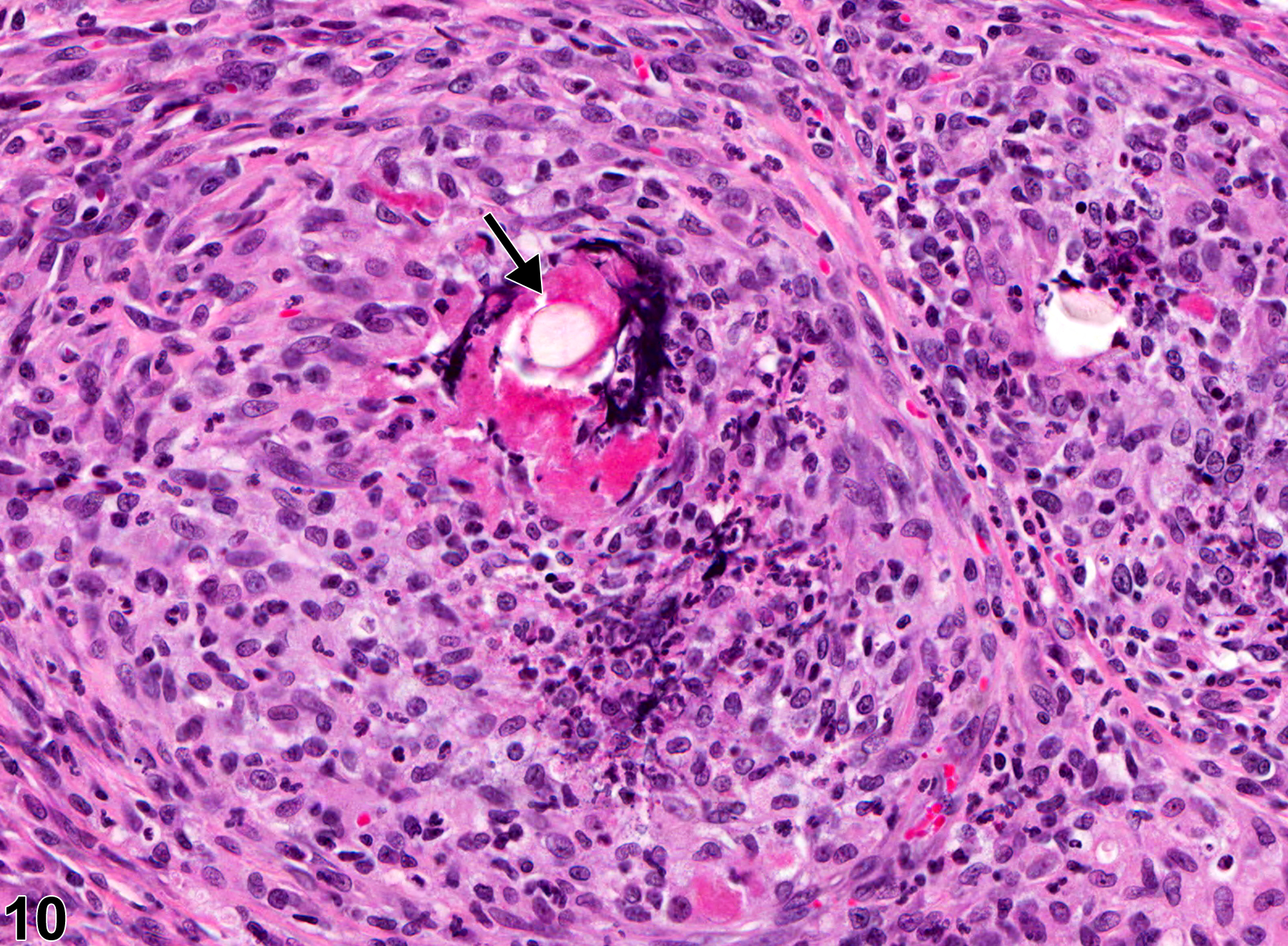Alimentary System
Tongue - Inflammation
Narrative
Inflammation can be a treatment-related lesion but can also occur as a spontaneous background lesion. Suppurative inflammation is often due to foreign bodies (Figure 6) or bacterial infections. If the inciting agent persists (e.g., the foreign body is not removed), the inflammatory response may become granulomatous (Figure 9 and Figure 10). The NTP uses the term "suppurative inflammation" for lesions that are considered abscesses. Generally, abscesses are incidental findings; however, a treatment-related increased incidence could occur with agents toxic to the squamous epithelium of the tongue.
Ackermann MR. 2007. Chronic inflammation and wound healing. In: Pathologic Basis of Veterinary Disease, 4th ed (McGavin MD, Zachary JF, eds). Mosby, St Louis, MO, 101-152.
Bertram TA, Markovits JE, Juliana MM. 1996. Non-proliferative lesions of the alimentary canal in rats GI-1. In: Guides for Toxicologic Pathology. STP/ARP/AFIP, Washington, DC, 1-16.
Full Text: https://www.toxpath.org/docs/SSNDC/GINonproliferativeRat.pdfBrown HR, Hardisty JF. 1990. Oral cavity, esophagus and stomach. In: Pathology of the Fischer Rat (Boorman GA, Montgomery CA, MacKenzie WF, eds). Academic Press, San Diego, CA, 9-30.
Abstract: https://www.ncbi.nlm.nih.gov/nlmcatalog/9002563Greaves P. 2007. Digestive system. In: Histopathology of Preclinical Toxicity Studies, 3rd ed. Academic Press, London, 334-456.
Abstract: http://www.sciencedirect.com/science/book/9780444527714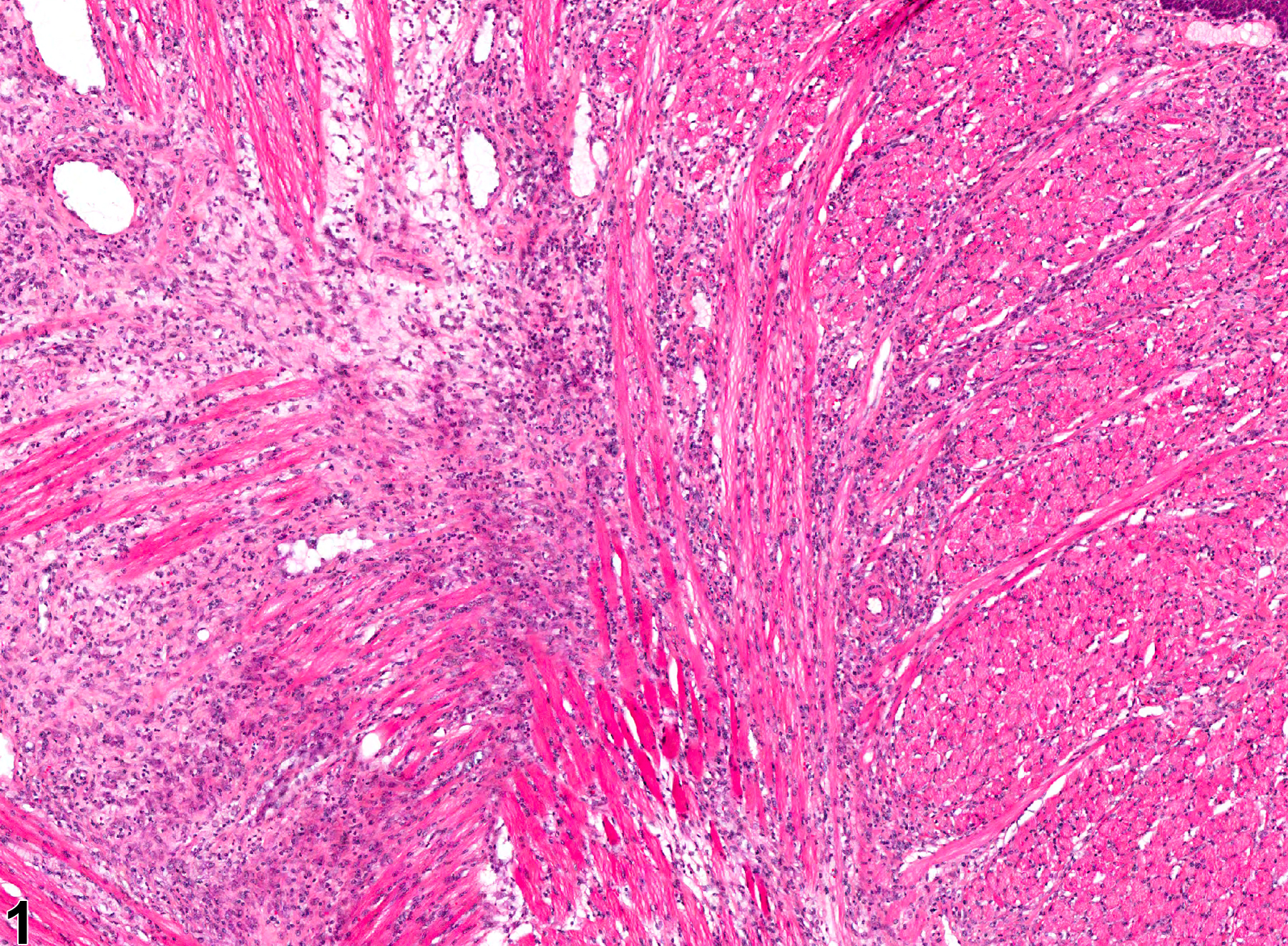
Tongue - Inflammation, Chronic active in a male F344/N rat from a chronic study. The muscle bundles are separated by inflammatory cells and fluid.



